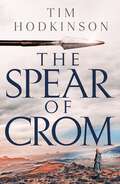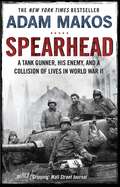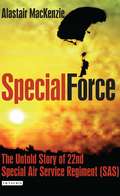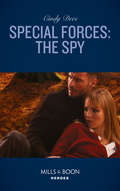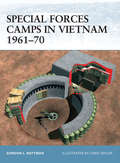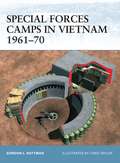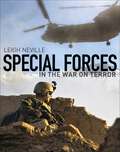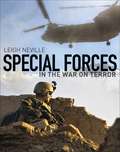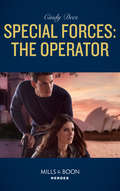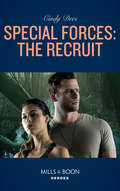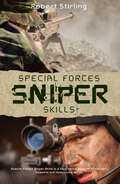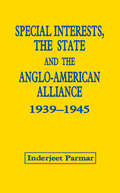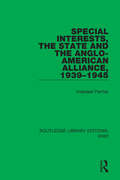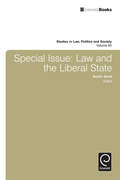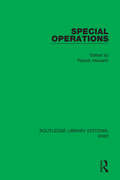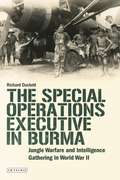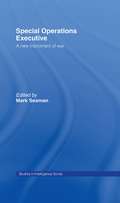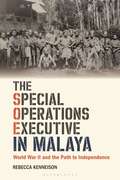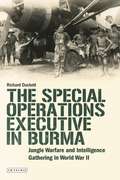- Table View
- List View
The Spear of Crom
by Tim HodkinsonIn first-century Roman Britain, a Celtic warrior rides out on a deadly mission. A thrilling blend of legend and history, bloody battles and daring deeds by the author of the Whale Road Chronicles.A priceless relic – a thankless quest – who will make it out alive? Britannia, 58 AD. Fergus MacAmergin is a man out of place. An Irish Celt, he passes as a Gaul and rides with the Roman cavalry, affirming Nero's control over the province. Fergus dreams of escaping the fetters ofhis birth and living freely as a citizen of Rome.When Fergus's commander makes a battlefield error, Fergus is blamed. He and his men are given a thankless task: a quest that spells danger, despair, and near-certain death. The mission: to find the Holy Lance, the spear that wounded Christ on the Cross.The young Tribune Agricola is drawn into the quest, and he and Fergus must overlook their differences to survive. But there are plots and enemies everywhere. And just why is the Holy Lance so key to Roman mastery over Britannia?Reviews for Tim Hodkinson: 'A brilliantly written historical adventure' Historical Novel Society 'A gripping action adventure' Melisende's Library 'An excellently written page-turner' Historical Writers' Association
Spearhead: An American Tank Gunner, His Enemy and a Collision of Lives in World War II
by Adam MakosThe New York Times Bestseller'Brilliant... Gripping' Wall Street JournalFrom the Sunday Times bestselling author of A Higher Call comes the riveting World War II story of an American tank gunner's journey into the heart of the Third Reich. At first, gunner Clarence Smoyer and his fellow crewmen in the legendary 3rd Armored Division - 'Spearhead' - thought their tanks were invincible. Then they met the German Panther, with a gun so murderous it could shoot through one Sherman and into the next. Soon a pattern emerged: the lead tank always gets hit.After Clarence sees his friends cut down breaching the West Wall and holding the line in the Battle of the Bulge, he and his crew are given a weapon with the power to avenge their fallen brothers: the Pershing, a state-of-the-art 'super tank', one of twenty in the European theatre.But with it comes a harrowing new responsibility: now they will spearhead every attack. That's how Clarence finds himself leading the U.S. Army into its largest urban battle of the European war, the fight for Cologne, the 'Fortress City' of Germany.Battling through the ruins, Clarence will engage the fearsome Panther in a duel immortalized by an army cameraman. And he will square off with Gustav Schaefer, a teenager behind the trigger in a Panzer IV tank, whose crew has been sent on a suicide mission to stop the Americans.As Clarence and Gustav trade fire down a long boulevard, they are confronted by a tragic mistake of war. What happens next will haunt Clarence to the modern day, drawing him back to Cologne to do the unthinkable: to face his enemy, one last time.
Special Force: The Untold Story of 22nd Special Air Service Regiment (SAS)
by Alastair MacKenzieThe exploits of the British Army's elite 22nd Special Air Service Regiment - the regiment of the SAS that forms part of the Regular army - are shrouded in mystery and myths abound about its members. But what is the truth behind the public façade of clinical professionalism? How has such a small regiment attracted so many weighty legends? And what is the purpose of the SAS in the 21st century?Special Force provides an original and unusually critical overview of the activities of the SAS from the Malayan Emergency of 1950 to the present day. After its disbandment as a regular unit of the British Army after the Second World War, the 22nd Special Air Service Regiment was re-established in the jungles of Malaya in 1950 to assist in the counter-insurgency campaign against the Chinese Communist Terrorists. More than half a century later the SAS has become the 'weapon of first choice' in UK military deployments. In this powerful and provocative book, Alastair MacKenzie analyses the reasons behind this development and questions what it reveals about for the relationship between the armed forces, the public and politicians in the present day.In the context of a detailed and often controversial analysis of the post-war activities of the Regiment, MacKenzie establishes that the Regiment's almost legendary professional competence is often not backed up by reality. Far from being part of a structured deployment of strategic military assets, MacKenzie argues that the use of the SAS in recent years has been primarily driven by the 'entrepreneurial' actions of a few SAS commanding officers. Special Force not only offers a revelatory history of the SAS in the modern period, it is also a disturbing exposé of the truth behind the myth. Mackenzie passionately stresses the need for a greater understanding of the strategic relevance of this unique military force to the UK's foreign and defence policy, arguing that the failure to understand the SAS's strengths and weaknesses could be fatal. Special Force will be essential reading for anyone with an interest in the British military - past, present and future.
Special Forces: Identical Stranger / Special Forces: The Spy (mission Medusa) (Mission Medusa #2)
by Cindy DeesA secret agent kidnaps an undercover operative!
Special Forces Camps in Vietnam 1961–70 (Fortress #33)
by Gordon L. RottmanIn 1961 US Special Forces units began entering remote areas of Vietnam dominated by the Viet Cong. Their task was to organize local defense and strike forces aimed at stopping the enemy from gaining further control of such areas. The Green Berets set up fortified camps from which indigenous troops defended local villages and attacked and harassed the enemy. How these camps were constructed, developed, and defended is documented here for the first time. This book also covers the weapons, barriers, and obstacles used in these camps, providing specific examples of camp design, and details how they withstood the test of battle against a determined and resourceful enemy.
Special Forces Camps in Vietnam 1961–70 (Fortress)
by Gordon L. Rottman Chris TaylorIn 1961 US Special Forces units began entering remote areas of Vietnam dominated by the Viet Cong. Their task was to organize local defense and strike forces aimed at stopping the enemy from gaining further control of such areas. The Green Berets set up fortified camps from which indigenous troops defended local villages and attacked and harassed the enemy. How these camps were constructed, developed, and defended is documented here for the first time. This book also covers the weapons, barriers, and obstacles used in these camps, providing specific examples of camp design, and details how they withstood the test of battle against a determined and resourceful enemy.
Special Forces in the War on Terror
by Leigh NevilleWithin weeks of 9/11, United States Special Operations Forces were dropping into Afghanistan to lead the war against Al Qaeda and the Taliban. For over a decade special forces have been fighting a hidden war in Iraq, Pakistan, Syria, Somalia, Mali and Afghanistan, facing off against a range of insurgents from organisations like al Qaeda, al Shabaab, Boko Haram and the Taliban. Leigh Neville draws on recently declassified material and first-hand-accounts from his SOF contacts to lift the veil of secrecy from these operations, giving an unprecedented blow-by-blow description of major Special Forces operations, culminating in SEAL Team 6's Operation Neptune Spear and the killing of Osama bin Laden. Detailing the special equipment, tactics, machinery and training that these Special Operatives received and used this impressive volume shows how the world's elite soldiers fought against overwhelming odds around the world.
Special Forces in the War on Terror
by Leigh NevilleWithin weeks of 9/11, United States Special Operations Forces were dropping into Afghanistan to lead the war against Al Qaeda and the Taliban. For over a decade special forces have been fighting a hidden war in Iraq, Pakistan, Syria, Somalia, Mali and Afghanistan, facing off against a range of insurgents from organisations like al Qaeda, al Shabaab, Boko Haram and the Taliban. Leigh Neville draws on recently declassified material and first-hand-accounts from his SOF contacts to lift the veil of secrecy from these operations, giving an unprecedented blow-by-blow description of major Special Forces operations, culminating in SEAL Team 6's Operation Neptune Spear and the killing of Osama bin Laden. Detailing the special equipment, tactics, machinery and training that these Special Operatives received and used this impressive volume shows how the world's elite soldiers fought against overwhelming odds around the world.
Special Forces: The Operator (Mission Medusa #3)
by Cindy DeesBound together by duty… Staying together by passion
Special Forces: The Recruit (Mission Medusa #1)
by Cindy DeesTheir mission? Save the world—and each other! A Military Precision Heroes romance
Special Forces Sniper Skills (General Military Ser.)
by Robert StirlingSpecial Forces Sniper Skills is a hard hitting account of the men, weapons and techniques used to coldly eliminate high value targets on the battlefield. Though many books have become best-sellers through telling one side of the story – a sniper's experiences, a training manual or a weapons catalogue – none before have combined the whole spectrum of a sniper's life and skills into one gripping book. This book examines the role of the sniper, and the unique skills employed, when serving as part of a Special Forces unit including the British SAS, the US Navy Seals and the Russian Spetznaz. The book is illustrated with photographs of every aspect of the sniper's trade and stories from the real-life experiences of the author's comrades: men who have served in almost every overt and covert conflict since World War II.
Special Forces Sniper Skills
by Robert StirlingSpecial Forces Sniper Skills is a hard hitting account of the men, weapons and techniques used to coldly eliminate high value targets on the battlefield. Though many books have become best-sellers through telling one side of the story – a sniper's experiences, a training manual or a weapons catalogue – none before have combined the whole spectrum of a sniper's life and skills into one gripping book. This book examines the role of the sniper, and the unique skills employed, when serving as part of a Special Forces unit including the British SAS, the US Navy Seals and the Russian Spetznaz. The book is illustrated with photographs of every aspect of the sniper's trade and stories from the real-life experiences of the author's comrades: men who have served in almost every overt and covert conflict since World War II.
Special Interests, the State and the Anglo-American Alliance, 1939-1945
by Inderjeet ParmarThis book aims to enhance our understanding of the Anglo-American alliance by examining the origins of the alliance during the Second World War. It presents a case study of how power is distributed in British society, and who makes the political decisions that decisively shape the society and world in which we live.
Special Interests, the State and the Anglo-American Alliance, 1939-1945
by Inderjeet ParmarThis book aims to enhance our understanding of the Anglo-American alliance by examining the origins of the alliance during the Second World War. It presents a case study of how power is distributed in British society, and who makes the political decisions that decisively shape the society and world in which we live.
Special Interests, the State and the Anglo-American Alliance, 1939–1945 (Routledge Library Editions: WW2 #32)
by Inderjeet ParmarThis book, first published in 1995, aims to enhance our understanding of the Anglo-American alliance by examining the origins of the alliance during the Second World War. It presents a case study of how power is distributed in British society, and who makes the political decisions that decisively shape the society and world in which we live.
Special Interests, the State and the Anglo-American Alliance, 1939–1945 (Routledge Library Editions: WW2 #32)
by Inderjeet ParmarThis book, first published in 1995, aims to enhance our understanding of the Anglo-American alliance by examining the origins of the alliance during the Second World War. It presents a case study of how power is distributed in British society, and who makes the political decisions that decisively shape the society and world in which we live.
Special Issue: Law and the Liberal State (Studies in Law, Politics, and Society #65)
by Austin SaratThis special issue of Studies in Law, Politics and Society focuses on law and the liberal state; presenting an interdisciplinary and multifaceted approach to analysis of law and liberty. The first chapters focus on law's direct relationship with the American liberal state. John P. Anderson defends John Rawl's pragmatism; Adelaide Villmoare and Peter Stillman consider the 'Janus faces of law', a double vision of law where both sides of the face adhere to one another through neoliberalism; and Timothy Delaune examines jury nullification. The remaining chapters then go on to consider specific applications of the law within society. Susan Burgess provides a critical account of what implications the inclusion of gays in the US military has for understanding the means by which the liberal state uses law to include the previously excluded. Daniel Skinner then problematizes the body politics of American liberalism, as viewed through the lens of health policy and the final chapter from Beau Breslin and Katherine Cavanaugh explores how various legal and judicial policies have highlighted the clash between the state's imperial authority and Native American narratives.
Special Operations (Routledge Library Editions: WW2 #33)
by Patrick HowarthThis book, first published in 1955, collects together accounts of some of the men and women who served as members of the remarkable S.O.E. This organisation was set up by Britain to encourage, help and organise resistance movements in occupied countries, and this book provides a valuable record of the types of people involved, and the work that they undertook.
Special Operations (Routledge Library Editions: WW2 #33)
by Patrick HowarthThis book, first published in 1955, collects together accounts of some of the men and women who served as members of the remarkable S.O.E. This organisation was set up by Britain to encourage, help and organise resistance movements in occupied countries, and this book provides a valuable record of the types of people involved, and the work that they undertook.
The Special Operations Executive: Jungle Warfare and Intelligence Gathering in WW2 (International Library of Twentieth Century History #130)
by Richard DuckettIn the mountains and jungles of occupied Burma during World War II, British special forces launched a series of secret operations, assisted by parts of the Burmese population. The men of the SOE, trained in sabotage and guerrilla warfare, worked in the jungle, deep behind enemy lines, to frustrate the puppet Burmese government of Ba Maw and continue the fight against Hirohito's Japan in a theatre starved of resources. Here, Richard Duckett uses newly declassified documents from the National Archives to reveal for the first time the extent of British special forces' involvement - from the 1941 operations until beyond Burma's independence from the British Empire in 1948. Duckett argues convincingly that 'Operation Character' and 'Operation Billet' - large SOE missions launched in support of General Slim's XIV Army offensive to liberate Burma - rank among the most militarily significant of the SOE's secret missions. Featuring a wealth of photographs and accompanying material never before published, including direct testimony recorded by veterans of the campaign and maps from the SOE files, The SOE in Burma tells a compelling story of courage and struggle in during World War II
Special Operations Executive: A New Instrument of War (Studies in Intelligence)
by Mark SeamanThis unique book presents an accurate and reliable assessment of the Special Operations Executive (SOE). It brings together leading authors to examine the organization from a range of key angles. This study shows how historians have built on the first international conference on the SOE at the Imperial War Museum in 1998. The release of many records then allowed historians to develop the first authoritative analyses of the organization’s activities and several of its agents and staff officers were able to participate. Since this groundbreaking conference, fresh research has continued and its original papers are here amended to take account of the full range of SOE documents that have been released to the National Archives. The fascinating stories they tell range from overviews of work in a single country to particular operations and the impact of key personalities. SOE was a remarkably innovative organization. It played a significant part in the Allied victory while its theories of clandestine warfare and specialised equipment had a major impact upon the post-war world. SOE proved that war need not be fought by conventional methods and by soldiers in uniform. The organization laid much of the groundwork for the development of irregular warfare that characterized the second half of the twentieth century and that is still here, more potent than ever, at the beginning of the twenty-first. This book will be of great interest to students of World War II history, intelligence studies and special operations, as well as general readers with an interest in SOE and World War II.
Special Operations Executive: A New Instrument of War (Studies in Intelligence)
by Mark SeamanThis unique book presents an accurate and reliable assessment of the Special Operations Executive (SOE). It brings together leading authors to examine the organization from a range of key angles. This study shows how historians have built on the first international conference on the SOE at the Imperial War Museum in 1998. The release of many records then allowed historians to develop the first authoritative analyses of the organization’s activities and several of its agents and staff officers were able to participate. Since this groundbreaking conference, fresh research has continued and its original papers are here amended to take account of the full range of SOE documents that have been released to the National Archives. The fascinating stories they tell range from overviews of work in a single country to particular operations and the impact of key personalities. SOE was a remarkably innovative organization. It played a significant part in the Allied victory while its theories of clandestine warfare and specialised equipment had a major impact upon the post-war world. SOE proved that war need not be fought by conventional methods and by soldiers in uniform. The organization laid much of the groundwork for the development of irregular warfare that characterized the second half of the twentieth century and that is still here, more potent than ever, at the beginning of the twenty-first. This book will be of great interest to students of World War II history, intelligence studies and special operations, as well as general readers with an interest in SOE and World War II.
The Special Operations Executive in Malaya: World War II and the Path to Independence
by Rebecca KenneisonDuring World War II, agents of the Special Operations Executive (SOE) infiltrated Japanese-occupied Malaya. There they worked with Malayan guerrilla groups, including the communist-sponsored Malayan Peoples Anti-Japanese Army (MPAJA), regarded as the precursor of the communist insurgent army of the Malayan Emergency. This book traces the development of SOE's Malayan operations, and analyses the interactions between SOE and the various guerrilla groups. It explores the reasons for and the extent of Malay disillusionment with Japanese rule, and demonstrates how guerrilla service acted as a training ground for some later Malay leaders of the independent nation. However, the reports written about the MPAJA by SOE operatives just after the war failed to draw out the likely future threat posed by the communists to the returning colonial administration. Rebecca Kenneison shows that the British possessed a wealth of local information, but failed to convert it into active intelligence in the period prior to the Malayan Emergency. In doing so she provides new insights into the impact of SOE on Malayan politics, the nature of Malayan communism's challenge to colonial rule, and British post-war intelligence in Malaya.
The Special Operations Executive in Malaya: World War II and the Path to Independence
by Rebecca KenneisonDuring World War II, agents of the Special Operations Executive (SOE) infiltrated Japanese-occupied Malaya. There they worked with Malayan guerrilla groups, including the communist-sponsored Malayan Peoples Anti-Japanese Army (MPAJA), regarded as the precursor of the communist insurgent army of the Malayan Emergency. This book traces the development of SOE's Malayan operations, and analyses the interactions between SOE and the various guerrilla groups. It explores the reasons for and the extent of Malay disillusionment with Japanese rule, and demonstrates how guerrilla service acted as a training ground for some later Malay leaders of the independent nation. However, the reports written about the MPAJA by SOE operatives just after the war failed to draw out the likely future threat posed by the communists to the returning colonial administration. Rebecca Kenneison shows that the British possessed a wealth of local information, but failed to convert it into active intelligence in the period prior to the Malayan Emergency. In doing so she provides new insights into the impact of SOE on Malayan politics, the nature of Malayan communism's challenge to colonial rule, and British post-war intelligence in Malaya.
The Special Operations Executive (SOE) in Burma: Jungle Warfare and Intelligence Gathering in WW2
by Richard DuckettIn the mountains and jungles of occupied Burma during World War II, British special forces launched a series of secret operations, assisted by parts of the Burmese population. The men of the SOE, trained in sabotage and guerrilla warfare, worked in the jungle, deep behind enemy lines, to frustrate the puppet Burmese government of Ba Maw and continue the fight against Hirohito's Japan in a theatre starved of resources. Here, Richard Duckett uses newly declassified documents from the National Archives to reveal for the first time the extent of British special forces' involvement - from the 1941 operations until beyond Burma's independence from the British Empire in 1948. Duckett argues convincingly that `Operation Character' and `Operation Billet' - large SOE missions launched in support of General Slim's XIV Army offensive to liberate Burma - rank among the most militarily significant of the SOE's secret missions. Featuring a wealth of photographs and accompanying material never before published, including direct testimony recorded by veterans of the campaign and maps from the SOE files, The SOE in Burma tells a compelling story of courage and struggle in during World War II
